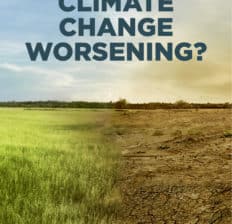This Dr. Axe content is medically reviewed or fact checked to ensure factually accurate information.
With strict editorial sourcing guidelines, we only link to academic research institutions, reputable media sites and, when research is available, medically peer-reviewed studies. Note that the numbers in parentheses (1, 2, etc.) are clickable links to these studies.
The information in our articles is NOT intended to replace a one-on-one relationship with a qualified health care professional and is not intended as medical advice.
This article is based on scientific evidence, written by experts and fact checked by our trained editorial staff. Note that the numbers in parentheses (1, 2, etc.) are clickable links to medically peer-reviewed studies.
Our team includes licensed nutritionists and dietitians, certified health education specialists, as well as certified strength and conditioning specialists, personal trainers and corrective exercise specialists. Our team aims to be not only thorough with its research, but also objective and unbiased.
The information in our articles is NOT intended to replace a one-on-one relationship with a qualified health care professional and is not intended as medical advice.
UN Climate Report 2022: Climate Change Worsening
April 18, 2022

Earth Week is a time to celebrate and encourage the environment and the wonders of the natural Earth. Unfortunately, year by year we see the negative environmental impacts of many of society’s common practices. The 2022 United Nations (UN) Climate Report bears this out yet again with eye-opening statistics.
In fact, the UN Climate Report 2022 rings the alarm that “unless governments everywhere reassess their energy policies, the world will be uninhabitable,” according to UN Secretary-General Antonio Guterres. In addition, the report states:
Climate change is the single biggest health threat facing humanity. The impacts are already harming health through air pollution, disease, extreme weather events, forced displacement, food insecurity and pressures on mental health. Every year, environmental factors take the lives of around 13 million people.
Meeting the goals of the Paris Agreement could save about a million lives a year worldwide by 2050 through reductions in air pollution alone. Avoiding the worst climate impacts could help prevent 250,000 additional climate-related deaths per year from 2030 to 2050, mainly from malnutrition, malaria, diarrhoea and heat stress.
The value of health gains from reducing carbon emissions would be approximately double the global cost of implementing carbon mitigation measures.
We already know the health effects of climate change are not good, and the UN Climate Report 2022 certainly verifies that. On a personal level, the impact of dietary changes on health and the environment can be significant, especially if more and more people and societies make healthier choices.
Let’s dive in to the good and bad from the UN Climate Report 2022.
UN Climate Report 2022: Climate Change Worsening
Why is the UN so concerned? Here are some of the key findings from the UN Climate Report 2022:
Temperature
- The Earth is more than a degree warmer (Celsius) that it was in 1800, and the world is not set to meet the Paris Agreement to keep the temperature from surpassing 1.5 degrees C above pre-industrial levels. “That is considered the upper limit to avoid the worst fallout from climate change,” according to the UN.
- 2015-2019 were the five warmest years on record while 2010-2019 was the warmest decade on record.
- Global surface temperature has increased faster since 1970 than in any other 50- year period over at least the last 2000 years.
- Surface temps increased faster since 1970 than any other 50-year period in the past 2,000 years.
- Carbon dioxide levels reached record highs in 2019.
- Temperatures could rise by as much as 4.4 degrees C in the next 80 years if we don’t reduce carbon dioxide emissions.
- Greenhouse gas concentrations are at their highest levels in 2 million years and continue to rise.
- Emissions need to drop 7.6% from 2020-2030 to keep temps from rising 1.5 degrees.
- Since the 1980s, Arctic surface air temperatures have warmed at least twice as fast as the global average, while sea ice, the Greenland ice sheet and glaciers have declined over the same period and permafrost temperatures have increased.
- We must decrease fossil fuel production by about 6% per year through 2030 to stay on that 1.5-degree path. Unfortunately, countries are projecting an average yearly increase of 2%.
Food and Agriculture
- The unsustainable use of land, soil, water and energy for food contributes to greenhouse gas emissions that cause rising temperatures. Higher temperatures in turn affect resources to produce food. Up to 811 million people in the world faced hunger in 2020, as many as 161 million more than in 2019.
- Food production, packaging and distribution generate a third of greenhouse gas emissions and cause up to 80% of biodiversity loss. Without intervention, food system emissions will likely increase by up to 40% by 2050.
- The world food system accounts for about 30% of total energy consumption.
- More than 17% of food is wasted, and up to 10% of greenhouse gas emissions are associated with food waste.
- Higher temps will cause declines in crop yields, along with lower quality food and more waste.
- The ocean has absorbed more than 90% of the excess heat in the climate, making it more acidic and less productive. This along with practices such as overfishing threatens marine resources that feed 3.2 billion people.
- Changes in snow cover, lake and river ice, and permafrost in many Arctic regions have disrupted food supplies from herding, hunting, fishing and gathering activities, harming livelihoods and the cultural identity of Arctic residents.
Health
- Every year, environmental factors take the lives of around 13 million people.
- More than 90% of people breathe unhealthy levels of air pollution, largely resulting from burning fossil fuels driving climate change. In 2018, air pollution from fossil fuels caused $2.9 trillion in health and economic costs, about $8 billion a day.
- Transportation produces about 20% of global carbon emissions.
- Systems to produce, package and distribute food generate a third of greenhouse gas emissions.
Nature
- About 25% of the globe’s greenhouse gas emissions come from land clearing, crop production and fertilization, with animal-based food contributing 75% of that.
- The majority of terrestrial species ranges are projected to shrink dramatically. Changes in ranges can adversely affect species conservation, greatly increase local species turnover and substantially increase the risk of global extinctions.
- Climate change has been linked to greater risks from zoonotic diseases. For some contagions, increases in temperatures or rainfall can dramatically affect the life cycles of either the pathogen or its vector – the intermediate species that spreads the disease from the original host to humans.
- Coral reefs are projected to decline 10% to 30% if the temperature rises 1.5 degrees.
- The $345 billion provided as global subsidies for fossil fuels results in $5 trillion in overall costs, including in terms of the deterioration of nature.
These are far from the only concerning findings in the UN Climate Report 2022 edition, and it shows just how dire the situation. However, there is still reason for hope.
What Can Be Done
Here are some things the UN Climate Report 2022 relays can help reverse course and help save the enironment:
- Adaptation to climate change safeguards people from higher temperatures, rising seas, fiercer storms, unpredictable rainfall and more acidic oceans. Some people are more vulnerable to these effects, such as those living in poverty.
- Globally, a $1.8 trillion investment in early warning systems, climate-resilient infrastructure, improved dryland agriculture, global mangrove protection and resilient water resources could generate $7.1 trillion in avoided costs and social and environmental benefits.
- Better weather data along with early warning and emergency management systems reduce physical damage and economic losses. Universal access to early warning systems can deliver benefits up to 10 times the initial cost.
- Solar-powered irrigation, weather alert systems, new crop varieties and other adaptive measures can help avoid a drop-off in global agricultural yields by up to 30% by 2050.
- Improving health systems could help prevent 250,000 additional climate- related deaths per year from 2030 to 2050, mainly from avoidable causes such as malnutrition, malaria, diarrhea and heat stress.
- Empowering women and girls to have a voice and a role in decision-making on climate change-related issues is essential for sustainable development and greater gender equality.
- As early adopters of many new agricultural techniques, first responders in crises, entrepreneurs of green energy and decision-makers at home, women offer invaluable insights and solutions into better managing the climate and its risks.
- Many practices can advance climate adaptation in food systems, such as erosion control, grazing land management, genetic improvements for tolerance to heat and drought, heterogeneous diets, and reduced food loss and waste.
- Pilot climate-smart agriculture initiatives in a number of countries have boosted productivity, lowered emissions, improved soil quality and water efficiency, and increased incomes and climate resilience.
- Consumption of healthy and sustainable diets presents major opportunities for reducing emissions from food systems and improving health outcomes, including through lower consumption of energy- and land-intensive animal-sourced foods.
- Meeting the goals of the Paris Agreement could save about a million lives a year worldwide by 2050 through reductions in air pollution alone. Avoiding the worst climate impacts could help prevent 250,000 additional climate-related deaths per year from 2030 to 2050, mainly from malnutrition, malaria, diarrhea and heat stress.
- The value of health gains from reducing carbon emissions would be approximately double the global cost of implementing carbon mitigation measures.
- Transportation alternatives like walking and cycling are not only green, but also offer major health benefits, such as reducing the risk of many chronic health conditions and improving mental health.
- More sustainable food production would mitigate climate impacts and support more nutritious diets that could prevent close to 11 million premature deaths a year.
- To protect health and avoid widening health inequities, countries must build climate-resilient health systems.
- Healthy ecosystems can provide 37% of the mitigation needed to limit global temperature rise.
Ultimately, the UN says global governments must continue to enact policy to protect the environment and stick to it. Without it, more people will go hungry and die of disease, while the entire planet will suffer.









